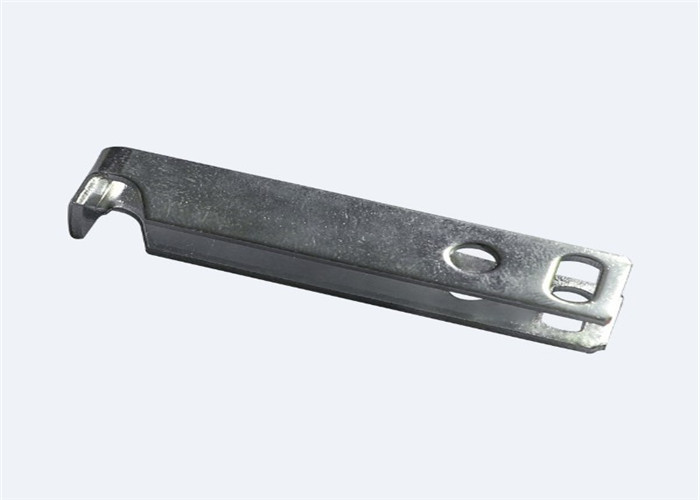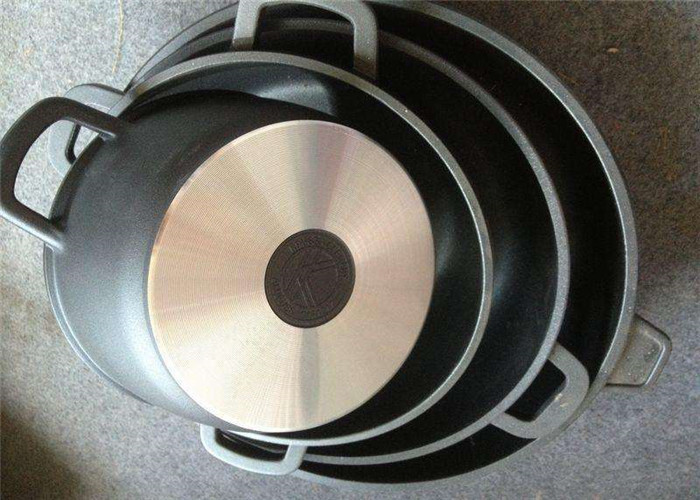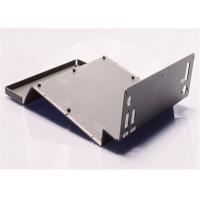Pressed Metal Parts Metal Stamping Components Stainless Steel 304
Material
Product Description and Process
Production process: metal stamping process
Machining process: CNC machine, machining center, lathe, mill
machine, drill machine, etc.
Surface treatment process: paint coating, electrophoretic coating,
electrogalvanizing coating, black oxide coating, powder coating,
etc.
Product Material and Uses
Normally produce with hot rolled plate, clod rolled plate,
galvanized plate, aluminum boards, stainless steel boards, aluminum
magnesium alloy boards. Q195, Q215, Q235, Q275, 08A1, 08F, 10F, 10,
15, 20, 25, 30, 35, 40, 45, 50, SPCC, SPCD, SPCE, Zn100-PT,
Zn200-SC, Zn275-JY, DX1, DX2, DX3, DX4, SECC, SECD, SECE, SUS301,
SUS304, SUS316, SUS430, etc.
The metal stamping products are widely used for auto-car parts,
truck parts, train parts, vehicle components, aviation industry
components, furniture appliances, electronic product, other
machinery components, etc.
Stamping (metalworking)
Stamping (also known as pressing) is the process of placing flat
sheet metal in either blank or coil form into a stamping press
where a tool and die surface forms the metal into a net shape.
Stamping includes a variety of sheet-metal forming manufacturing
processes, such as punching using a machine press or stamping
press, blanking, embossing, bending, flanging, and coining. This
could be a single stage operation where every stroke of the press
produces the desired form on the sheet metal part, or could occur
through a series of stages. The process is usually carried out on
sheet metal, but can also be used on other materials, such as
polystyrene. Stamping is usually done on cold metal sheet.
Stamping Operations
1. Bending - the material is deformed or bent along a straight
line.
2. Flanging - the material is bent along a curved line.
3. Embossing - the material is stretched into a shallow depression.
Used primarily for adding decorative patterns.
4. Blanking - a piece is cut out of a sheet of the material,
usually to make a blank for further processing.
5. Coining - a pattern is compressed or squeezed into the material.
Traditionally used to make coins.
6. Drawing - the surface area of a blank is stretched into an
alternate shape via controlled material flow.
7. Stretching - the surface area of a blank is increased by
tension, with no inward movement of the blank edge. Often used to
make smooth auto body parts.
8. Ironing - the material is squeezed and reduced in thickness
along a vertical wall. Used for beverage cans and ammunition
cartridge cases.
9. Reducing/Necking - used to gradually reduce the diameter of the
open end of a vessel or tube.
10. Curling - deforming material into a tubular profile. Door
hinges are a common example.
11. Hemming - folding an edge over onto itself to add thickness.
The edges of automobile doors are usually hemmed.
Piercing and cutting can also be performed in stamping presses.
Progressive stamping is a combination of the above methods done
with a set of dies in a row through which a strip of the material
passes one step at a time.
Industry-specific applications
Metal stamping can be applied to a variety of materials based on
their unique metalworking qualities for a number of applications
across a wide range of industries. Metal Stamping may require the
forming and processing of base common metals to rare alloys for
their application specific advantages. Some industries require the
electrical or thermal conductivity of beryllium copper in areas
such as aerospace, electrical, and the defense industry or the high
strength application of steel and its many alloys for the
automotive industry. Industries metal stamping is used for:
- Aerospace
- Agriculture
- Ammunitions
- Major appliances
- Small appliances
- Automotive
- Commercial
- Construction
- Electronics
- HVAC
- Lawn Care & Equipment
- Lighting
- Lock Hardware
- Marine
- Medical
- Plumbing
- Power Storage
- Power Tools
- Small Engine
Custom Metal Stamping Services - Medium to High-Volume Production
We custom metal stamping services deliver precision metal stampings
from prototype through production quantities. We run stampings up
to 5mm thick, but our specialty is high-volume, tight tolerance,
precision stampings in a variety of materials from .003”-.20”
thick. Our presses have full feed lines and are die sensor
protection ready. We run millions of stampings per year at a 98% on
time delivery rate.
Our production stamping methods include progressive and single hit
dies, using materials such as aluminum, carbon steel, stainless
steels and other metals. We have expertise in deep draw, mandrel,
blanking, cam dies, transfer, louvering, insertion and rolled seam
dies, among others. Our press capabilities range from 30 to 1000
tons. Parts are fully inspected using vision systems, optical
comparators, CMM equipment and functional gages. We serve
industries including aerospace, defense, medical and electronics,
for applications such as heat transfer products, military
components and electronic assemblies.
Other advantages include:
- In-house tooling, gage and fixture building
- As experts in carbide, we have increased the run times of many of
our tools between sharpenings. This saves customers’ money on die
maintenance and part costs.
- Full PM program for our equipment and tooling
- Inspection processes capable of first article, PPAP, collecting CPK
data, lot controlling and functional checks
With CNC Machining, Fabrication, CNC Grinding, Wire EDM and
secondary support presses, we can be a single source for your
assembly and sub-assembly needs.
How Does the Sheet Metal Stamping Process Work?
Sheet metal is one of the strongest materials that can still be
easily shaped and cut. Plus, sheet metal is recyclable, which
drives costs down.
Metal stamping is used to produce parts in many industries.
Original Equipment Manufacturers (OEM) most often make use of sheet
metal stamping to make their parts where casting would be too
expensive. It’s inexpensive and efficient, but it’s likely you
don’t really know how it works.
First, the basics.
Some OEMs produce their own stamped sheet metal on site, while
others outsource to Tier 1 suppliers. It is these suppliers that
build the dies for stamping down the line.
Sheet metal itself is usually made of steel, but stamping can be
done with all kinds of metals, including golds and advanced
super-alloys.
Basically, sheet metal stamping involves a flat metal sheet, also
known as a blank, being pressed between adie and a punch to get the
desired shape.
Blank – the portion of the sheet metal which is punched through the
die
Die – defines the outside shape of the part
Punch – defines the inside shape of the part
Ram – moving component which presses down on the metal with upper
die pattern
Bolster Plate – stationary lower part of the die
Blank Holder – holds the blank for control during stamping
These parts form the press, the ultimate tool of stamping sheet
metal.
Of these, the die is probably the most complicated, and are often
designed with inserts to produce variations on standard presses.
You’ve probably seen dies used to make novelty souvenir coins —
dies can be used for all kinds of processes and materials. They can
be small enough to build microelectronics or large enough to cut
out sides of busses.
Presses can be built as single stage or progressive blanking tools.
Single Stage Press – stamping operations are done before or after
the blanking
Progressive Blanking Press Tools – stamping is done by the machine
prior to blanking, so the complete component is punched out
throughout the blanking die.
As blanks are punched out of the sheet metal, the come through the
die, which is built with a slight angle so that blanks don’t get
stuck inside the die. Accidental hold ups can damage the machine,
so it’s important that the stamping and blanking process continues
smoothly.
Sheet metal presses are powerful machines. It takes about 71 tonnes
of pressure to cut a 10 inch circle out of .125 inch sheet metal.
Modern presses range from 10 to 50,000 tonnes of force.
After stamping, some parts require further work in a process known
as deep drawing. In deep drawing, a flat blank is drawn slowly over
a forming die to achieve its shape. Next, excess material must be
cut from the deep drawn metal. Finally, the metal might need to be
bent, flanged.

















